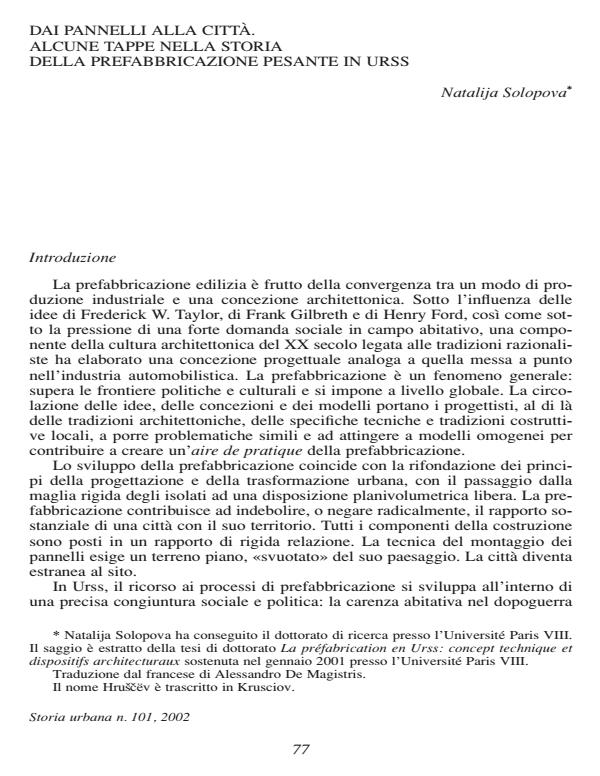Dai pannelli alla città. Alcune tappe nella storia della prefabbricazione pesante in URSS
Journal title STORIA URBANA
Author/s Natalija Solopova
Publishing Year 2003 Issue 2002/101 Language Italian
Pages 30 P. File size 713 KB
DOI
DOI is like a bar code for intellectual property: to have more infomation
click here
Below, you can see the article first page
If you want to buy this article in PDF format, you can do it, following the instructions to buy download credits

FrancoAngeli is member of Publishers International Linking Association, Inc (PILA), a not-for-profit association which run the CrossRef service enabling links to and from online scholarly content.
In the Soviet Union, the development of prefabricated buildings seems to have been a discontinuous process. During the 1920’s the industrialization of the nation, the spread of works by Taylor and Ford, and the presence of foreign technicians opened the debate on prefabrication. During this phase, constructions using large cement blocks and lighter wooden prefabricates were experimented. During the 1930’s the «academic» trends in Soviet architecture clashed with concepts of prefabrication, but not in a particularly radical fashion: technical innovations and theoretical research conserved the objective of prefabrication. The sum of the destruction caused by the Second World War gave rise to the development of industrial methods of reconstruction that were, however, impeded by the formal aspects, as demonstrated by the debate concerning the «visible» joints between prefabricated panels. With Stalin’s death and Nikita Kruschev’s rise to power (1953), the prefabricated buildings were envisioned as a method of solving the extensive housing crisis. For this reason it was explicitly included in the political program of the new party leader. This phase constitutes the second short-term trend in the history of Soviet prefabrication.
Natalija Solopova, Dai pannelli alla città. Alcune tappe nella storia della prefabbricazione pesante in URSS in "STORIA URBANA " 101/2002, pp , DOI: